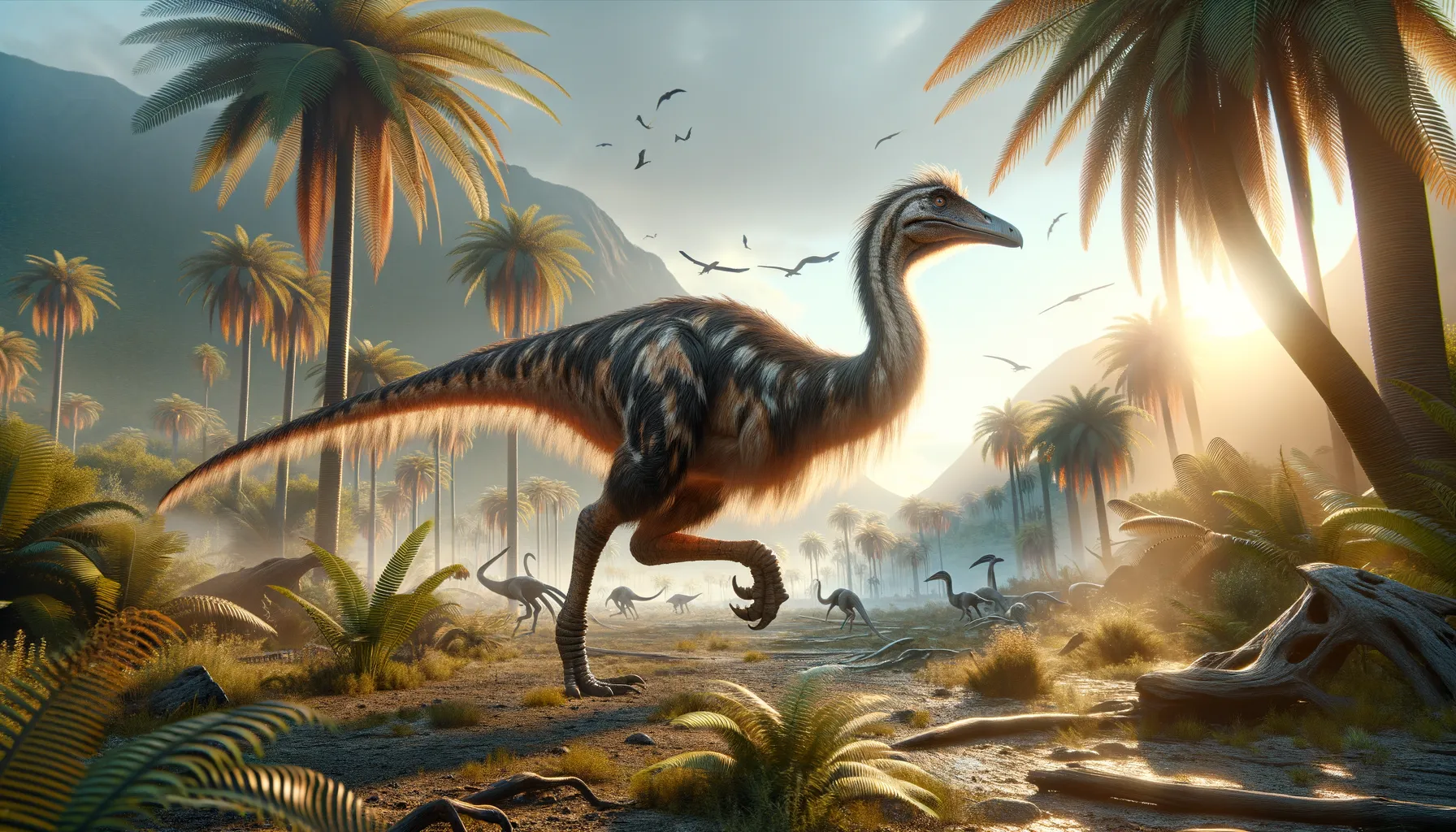
Ornithomimus
The Cretaceous speedster on two legs!
Period
triassic
Length
Measured around 3.5 meters (11.5 feet) long.
Height
Stood about 2 meters (6.5 feet) tall.
Weight
Weighed around 100 to 150 kg (220 to 330 lbs).
Ornithomimus was a swift, ostrich-like dinosaur that roamed the Earth during the late Cretaceous period. With its long legs and lightweight body, it was one of the fastest dinosaurs, adept at escaping predators. This dinosaur had a beaked mouth and is thought to have been omnivorous, feeding on plants, small animals, and insects. With numerous fossils found, Ornithomimus provides key insights into the diversity of dinosaur species and their adaptive strategies.
Diet
Ornithomimus was likely omnivorous. It probably ate a variety of plants, small animals, and insects thanks to its beak, which could grasp diverse foods.
Hunting
It likely foraged for small animals and insects. Its speed and agility helped it bypass predators while searching for food.
Environmental challenges
Ornithomimus faced predators and competition for food sources. Its habitat composed of various terrains, each offering unique challenges like dense vegetation or open plains. Climate fluctuations would have prompted migrations to find food. Regular flooding and periods of drought affected resource availability.
Speed
It could run up to 60 km/h (37 mph).
Lifespan
Lived to around 8-12 years.
First discovery
First discovered in the late 19th century.
Fun Facts
- Ornithomimus means 'bird mimic' because its skeletal structure was similar to that of modern birds.
- These dinosaurs had long legs, indicating they were fast runners, much like today's ostriches.
- Ornithomimus lived during the Late Cretaceous period, about 76 to 66 million years ago.
- Unlike many other dinosaurs, Ornithomimus had a toothless beak, suggesting it might have been an omnivore.
- Fossil evidence suggests Ornithomimus had feathers, possibly for display or temperature regulation.
- They are thought to have been social creatures, often depicted as moving in groups.
- Ornithomimus reached lengths of about 12 feet, making them moderately sized among dinosaurs.
Growth and Development
Ornithomimus had a rapid growth period during its juvenile stage. As it matured, its weight and size increased progressively, aiding its speed and survival. This fast growth helped it reach maturity quickly in a predator-heavy environment. Young ones had to quickly develop agility and speed to evade predators.
Habitat
Ornithomimus dwelled in what are now North America's semi-arid plains and woodlands. These regions provided both cover from predators and ample greenery for foraging. Seasonal changes would lead them to migrate to track their food sources. The landscape was punctuated by rivers, which were crucial to its survival.
Interaction with other species
Ornithomimus interacted with various dinosaurs, including predators like tyrannosaurs. It would have competed with other herbivores for plant resources. Its presence in large numbers suggests it was well adapted to its ecological niche. Ornithomimus skeletons found together indicate possible social behaviors.
Natural lifespan
Its natural lifespan was likely between 8 and 12 years.
Reproduction
Ornithomimus likely laid eggs in nests, as suggested by fossilized nesting sites. Parental care was possibly provided, at least until the young were independent. This approach would have been vital for increasing offspring survival rates. Its reproductive strategies mirror that of modern birds, given its close evolutionary relationship.
Social behaviour
Ornithomimus might have lived in groups for increased protection against predators. Social living could also aid in finding food through collaborative efforts. Mutual alertness among members would decrease the risk of predator attacks. Their possible group behavior is reflected in findings of multiple skeletons together.
Fossil locations
Fossils have been predominantly found in North America. Key locations include Alberta, Canada, and parts of the United States, especially the western regions. These findings provide crucial insights into both their existence and the environments they inhabited. The distribution of fossils helps map their habitats during the Cretaceous period.
